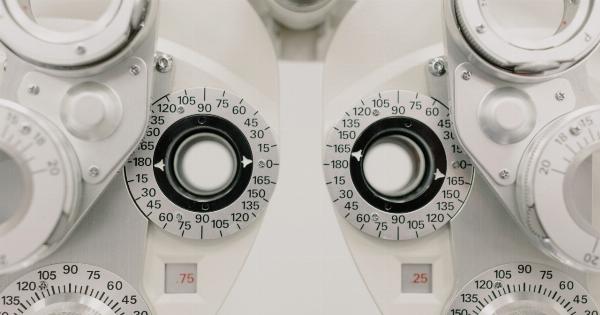Timing is crucial in replacing the aortic valve in aortic stenosis. Aortic stenosis is a heart condition that causes the narrowing of the aortic valve, which affects the blood flow from the heart to the rest of the body.
The aortic valve is responsible for controlling the blood flow from the heart’s left ventricle to the main artery.
As a result of this condition, the heart has to work harder to pump blood, leading to chest pain, shortness of breath, and fatigue. In severe cases, aortic stenosis can cause heart failure and sudden death.
When it comes to replacing the aortic valve, timing is paramount. Physicians need to balance the risks and benefits of each intervention to ensure that their patients receive the most effective care possible.
Diagnosing Aortic Stenosis
The first step in replacing the aortic valve is to diagnose aortic stenosis. This starts with identifying the signs and symptoms of the condition.
Diagnosis typically begins with a physical examination, where a doctor can detect a heart murmur or abnormal heartbeat.
Checking for aortic stenosis also involves medical imaging tests, such as an echocardiogram, a CT scan, or an MRI scan. These exams help to evaluate the size and thickness of the heart, the blood flow, and the condition of the valve.
This information is essential for physicians to determine the best course of action for treatment.
When to Replace Aortic Valve
Once diagnosed with aortic stenosis, the next question becomes when to intervene and replace the valve. Doctors usually consider several things, such as symptoms, age, health status, and valve function, in making this decision.
These factors help physicians to evaluate the risks and benefits of valve replacement surgery.
Symptoms
When a patient experiences symptoms of aortic stenosis, such as chest pain or dizziness, doctors will most likely recommend valve replacement surgery.
These symptoms indicate that the heart is struggling to pump blood through the narrow valve, leading to aortic stenosis. Severe symptoms such as inability to perform daily activities, passing out, and shortness of breath, are urgent indications that the valve needs urgent replacement.
Severe symptoms from aortic stenosis are also associated with increased risk of death from heart failure. As the symptoms become more severe, the urgency to replace the valve becomes more critical.
In some cases, even when symptoms are not yet present, the patient may need an early valve replacement procedure to avoid possible complications that can arise from aortic stenosis.
Age
Age is another factor that physicians consider when deciding on an intervention. Younger patients are more likely to undergo valve repair surgery than replacement surgery. This is because valve repair has a better long-term outcome for younger patients.
The advantage of valve repair is that it preserves the heart’s natural valve, thus preventing possible complications that can arise from valve replacement.
However, older patients are more likely to undergo valve replacement surgery. Elderly patients are less likely to regain their strength following a valve repair procedure.
Therefore, valve replacement is a viable option for older patients with aortic stenosis.
Health Status
Another essential factor in determining valve replacement is the patient’s overall health status. This includes their medical history, current medications, underlying condition, and any underlying heart disease.
Patients with multiple health conditions would benefit more from undergoing valve replacement surgery to help improve their quality of life.
However, physicians must be careful to identify patients who may not be suitable candidates due to their health status.
For example, patients with kidney disease, lung problems, and liver disease may need to adopt a more conservative approach to treatment, working to strengthen their health before eventually undergoing valve replacement.
Valve Function
Valve function is the final determining factor in valve replacement. Doctors use imaging tests, such as echocardiography, to determine the condition of the valve and the severity of the stenosis.
These tests help in determining if the valve is repairable or if it should be replaced.
Patients with severe aortic stenosis will need valve replacement surgery, regardless of age or health status.
Valve replacement outcomes are excellent, with low mortality rates, and patients generally experience significant improvements in their quality of life post-surgery.
Risks and Benefits of Timing Valve Replacement
Timing valve replacement is essential for balancing the risks and benefits of the surgery. Early valve replacement can result in a better outcome for the patient, reducing the risks of potential complications resulting from aortic stenosis.
Since the surgery would happen before the patient experiences severe symptoms, the patient would usually be healthier, making the surgical procedure more successful.
On the other hand, waiting too long to intervene can result in poorer outcomes. Aortic stenosis can cause the heart to become damaged, leading to heart failure.
This is especially problematic for elderly patients and those with underlying health conditions. Waiting too long may put patients at risk of developing other complications that can arise from heart failure.
Conclusion
Timing is crucial in replacing the aortic valve in aortic stenosis. Physicians must carefully determine when the intervention is necessary for each patient, balancing the risks and benefits of valve replacement surgery.
It is essential to consider various factors such as age, health status, symptoms and valve function, when deciding on the best course of treatment for each patient.
Early interventions yield better outcomes, while delaying too long can have severe complications, making timing valve replacement a critical factor in the treatment of aortic stenosis patients.






























